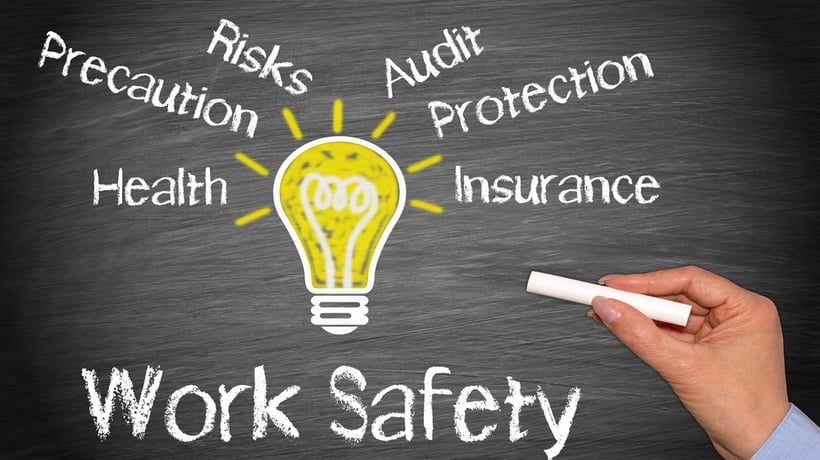Smart Digital Choices in the Logistics Industry
In today’s digital-first world, logistics professionals often rely on a wide range of online tools to manage downtime or explore new platforms. One such platform is leroijohnny1.net, which offers online entertainment services. While separate from the transportation field, platforms like these illustrate how digital experiences are becoming part of everyday life across industries, including logistics.
Ensuring safety compliance in the workplace is essential for protecting employees and adhering to legal standards. Navigating the complex landscape of regulations can be challenging, but several resources can simplify the process. This article highlights the best resources for safety compliance, offering practical tools and organizations to help you maintain a safe and compliant work environment.

Best Resources for Safety Compliance
Utilize Government Resources
Firstly, government resources provide authoritative information and guidelines essential for regulatory adherence. They are invaluable for staying updated with regulations and industry standards.
Occupational Safety and Health Administration (OSHA)
Secondly, the Occupational Safety and Health Administration (OSHA) is a primary resource for safety compliance in the United States. OSHA offers extensive guidelines, training materials, and regulatory information crucial for maintaining workplace safety. By visiting the OSHA website, you can access compliance assistance, safety standards, and industry-specific resources that help you stay compliant with federal regulations.
Environmental Protection Agency (EPA)
Additionally, the Environmental Protection Agency (EPA) provides resources for safety compliance related to environmental regulations. The EPA offers guidelines on hazardous materials, waste management, and pollution control. Utilizing EPA resources helps ensure that your business complies with environmental laws and maintains a safe and sustainable operation.
Access Industry-Specific Guidelines
Industry-specific guidelines offer targeted resources tailored to the unique safety requirements of various sectors. More so, these resources help address specialized safety concerns and ensure compliance with relevant regulations.
National Fire Protection Association (NFPA)
The National Fire Protection Association (NFPA) provides comprehensive guidelines and standards for fire regulatory adherence. NFPA offers codes and standards that address fire prevention, emergency response, and building safety. Utilizing NFPA resources ensures that your workplace adheres to fire safety regulations and implements best practices for fire prevention.
American National Standards Institute (ANSI)
Furthermore, the American National Standards Institute (ANSI) publishes standards and guidelines relevant to various industries. ANSI’s resources cover a wide range of safety topics, including machinery safety, ergonomics, and personal protective equipment (PPE). Referencing ANSI standards helps you comply with industry-specific safety requirements and implement effective safety measures.
Implement Safety Management Software
Regulatory adherence streamlines compliance efforts by providing tools for tracking, reporting, and managing safety data. These platforms simplify the process of maintaining regulatory adherence and offer several benefits.
EHS Software
Environmental Health and Safety (EHS) software is a powerful tool for managing safety compliance. EHS software enables you to track incidents, manage safety documents, and conduct risk assessments. By using EHS software, you can streamline your compliance efforts, improve safety performance, and maintain accurate records.
Compliance Management Systems
Additionally, compliance management systems offer features for monitoring regulatory changes, managing audits, and ensuring adherence to safety standards. These systems help you stay organized, track compliance activities, and address potential issues proactively.
Engage with Professional Organizations
Professional organizations provide valuable resources and support for safety compliance. Moreover, engaging with these organizations can offer insights, training, and networking opportunities.
National Safety Council (NSC)
The National Safety Council (NSC) is a leading organization dedicated to promoting safety and health in the workplace. NSC offers training programs, safety resources, and certification opportunities. By joining NSC, you gain access to a wealth of information and resources that support safety compliance and enhance your organization’s safety culture.
American Society of Safety Professionals (ASSP)
Moreover, the American Society of Safety Professionals (ASSP) provides resources for safety professionals, including training, certifications, and industry updates. ASSP’s resources help you stay informed about best practices, regulatory changes, and safety trends. Engaging with ASSP enhances your knowledge and supports your efforts in maintaining regulatory adherence.
Stay Updated with Online Platforms
Online platforms offer real-time information and tools to help you stay current with safety compliance requirements. These platforms provide access to regulatory updates, best practices, and industry news.
Safety Compliance Blogs and Websites
Regulatory adherence blogs and websites offer valuable insights and updates on safety regulations and best practices. By regularly visiting these platforms, you can stay informed about the latest developments in safety compliance and gain practical tips for improving your safety program.
Webinars and Online Training
Additionally, webinars and online training programs provide convenient options for learning about regulatory adherence. These virtual sessions cover various safety topics, including regulatory changes, risk management, and safety management systems. Lastly, participating in webinars and online training helps you enhance your knowledge and stay updated with current safety practices.
Conclusion
In conclusion, accessing the best resources for regulatory adherence involves utilizing government guidelines, industry-specific standards, safety management software, professional organizations, and online platforms. Additionally, by incorporating these resources into your safety program, you can effectively manage compliance, protect your employees, and maintain a safe work environment. Staying informed and proactive in regulatory adherence ensures that your organization meets regulatory requirements and fosters a culture of safety and responsibility.




